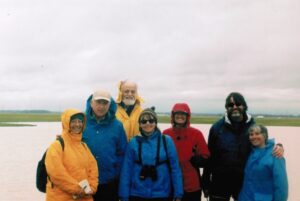Long History of Planning to Manipulate Tuscan Aquifer for Profit
In 2011 the Glenn Colusa Irrigation District’s study (funded by DWR and USBR) described how the Tuscan Aquifer should be exercised aggressively to meet California-wide water demand through water transfer markets. The report envisions groundwater recharge in Butte County and extraction in Glenn and Colusa Counties.
The report promises that the Tuscan, if integrated into California’s water supply system, would provide major water supply reliability benefits. BUT, “it will take decades before we know enough about the aquifer dynamics to devise … a risk- free regime, and yet it would be foolish to require that the aquifer remain an underperforming asset in the interim. Fortunately, there is an approach that can permit more aggressive use of the Lower Tuscan Formation while we improve our understanding of how best to manage it. We can do that by providing current Tuscan groundwater users a risk-free water supply alternative in the form of a supplemental surface water supply.”
The Tuscan Water District is instrumental in the water grab by “Formation of a new water district with the primary purpose, power to import, transfer and recharge water within the Vina and a portion of the Butte Sub-basins.” Senior water diverters in the Sacramento Valley are using Sustainable Groundwater Management Plans (GSPs) as a Trojan Horse to conduct experimental recharge/extraction projects, capturing ownership of Valley aquifers, entrenching their participation in the California water market. AquAlliance.net has mounted a legal challenge to the Vina/Butte/Colusa GSPs which provide the roadmap for water marketers to privatized groundwater banks.
– Jim Brobeck
AquAlliance Water Policy Analyst







